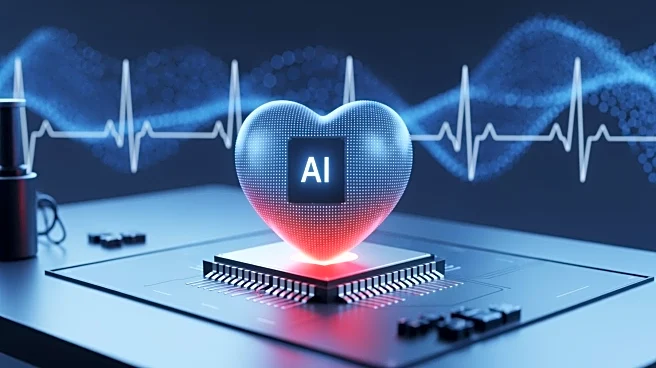What's Happening?
Emerging research underscores the importance of routine eye exams in detecting early signs of heart disease. The retina, which is rich in blood vessels, can reflect the state of the vascular system, allowing
eye specialists to identify cardiovascular issues before symptoms such as chest pain or high blood pressure appear. Conditions like hypertensive retinopathy and retinal vein occlusion can indicate high blood pressure or increased risk of stroke. Advanced imaging techniques, including optical coherence tomography, enhance the detection of these subtle changes. Regular eye examinations are increasingly recognized as a non-invasive tool for identifying individuals at risk of heart disease, suggesting that comprehensive eye screening should be part of routine health check-ups.
Why It's Important?
The significance of this development lies in its potential to improve early detection and prevention of heart disease, which often begins silently and can damage blood vessels without obvious symptoms. By identifying cardiovascular risks early through eye exams, individuals can make timely lifestyle changes or receive medical interventions that may prevent serious events like heart attacks or strokes. This approach could lead to improved long-term health outcomes and reduced overall cardiovascular risk, particularly for those with high blood pressure, diabetes, or a family history of heart disease.
What's Next?
As awareness grows about the link between eye health and cardiovascular risk, it is likely that more optometrists will incorporate retinal imaging into standard check-ups. Individuals, especially those at higher risk, are encouraged to book regular eye tests and request retinal imaging to uncover early warning signs. Sharing medical history with eye doctors can further aid in early detection. Following up on unusual findings promptly can lead to early intervention, potentially saving lives by preventing severe cardiovascular events.
Beyond the Headlines
This development highlights the interconnectedness of different body systems and the role of advanced imaging technologies in preventive healthcare. It also raises ethical considerations regarding access to such diagnostic tools and the need for public health policies that support widespread availability of comprehensive eye exams. The integration of artificial intelligence in eye health assessments could further enhance early detection capabilities, offering a promising avenue for future research and healthcare innovation.











